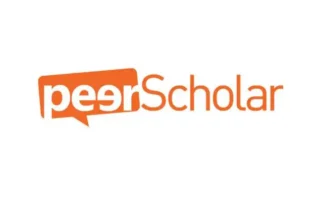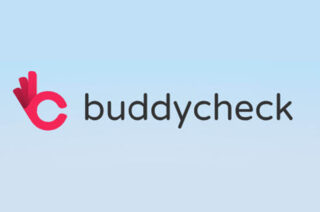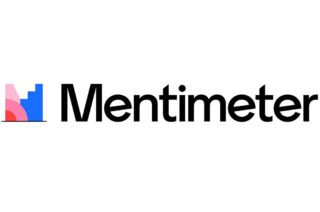Factsheet: Group Work

Introduction
Not only is our behaviour largely determined by social effects (we generally do what we think “most people who are important to us think that we should/should not do”) (Webb & Sheeran, 2006), but “one of the ways in which humans learn most efficiently and effectively is when learning is situated within the social context” (Encyclopedia of the Sciences of Learning, 2012). Thus our motivation for learning and our efficiency in learning are largely dependent on social effects.
This is true whether the students are working together as a method of peer learning or work together on an assessed piece of work. Here we will focus on the latter.
What is this? What problems does this solve?
The basic idea is to get students to work on a learning activity as a group. This can address motivational problems, and improve student achievement. When students help each other learn, both the giver and receiver of information benefit (related to improved feedback for the learner and the testing effect for the giver – see the How Students Learn factsheet for more information on these effects).
Being able to work well in a team is a desirable graduate attribute that will improve the employability of your students, but teamwork is a skill that needs teaching, feedback and opportunities for reflection, not just practice. In other words, you should not expect students to learn how to work well in a team just from having worked that way before.
Where can I learn more?
If you want to know about why cooperative learning works and where it works best, start with Gillies. “Cooperative learning: Review of research and practice.” (2016). If you want to assess groups I recommend starting with Gibbs. “The assessment of group work: lessons from the literature.” (2009).
Below is a summary of some of the main findings from the research.
Gibbs, Graham. “The assessment of group work: lessons from the literature.” Assessment Standards Knowledge Exchange (2009): 1-17.This is a great starting point for designing assessments for groups.
“Allocating a single group mark to all members of a group rarely leads to appropriate student learning behaviour, frequently leads to freeloading”.
“It is better to create mixed ability groups”.
“Peer assessment undertaken anonymously can contribute to producing a reasonable spread of marks for individuals”.
- McCrea, Ronan, et al. “Facilitating Group Work: a Guide to Good Practice.” (2016).This has more detail on the practical recommendations on:
- How to assign students to groups: they recommend students’ pair up (self-selected pairs) and the pairs are allocated to groups with a mix of academic ability (lecturer-assigned groups). For long, complex task then additionally aim for diverse groups (w.r.t. gender, culture, nationality, etc.).
- How to prepare groups for working together: they recommend: (1) explicitly teaching team working skills; (2) be explicit in the disciplinary policy for freeloading students and the rules surrounding the assessment criteria and the assessment process; (3) students should create a “team expectations agreement” defining when they will meet, how they will keep track of work commitments, the software they will use to communicate, etc.
- Managing emerging/disciplinary issues: they recommend having clear policies on freeloading and a way for academics to monitor weekly engagement. They discuss a yellow/red card system (further detailed in Gibson 2016) where one group member can issue a warning to another group member which if not rescinded by the end of the project will result in a reduction of their mark; or a red card where a group member will meet with the lecturer to discuss the expulsion of a member from a group.
- It also discusses assessment strategies, but these are better covered in the updated versions addressed below (Gibson 2016 and Delaney 2016).
- Gibson, Rita, et al. “An Exploration of Fairness in the Assessment and Process of Student Group Work.” (2016). A summary of ways to assess group work, and an extended discussion of different aims of using groups (to help you decide on the assessment techniques). Table 1, p.3 is an excellent summary of how to differentiate marks between group members (see the paper below for the trade-offs involved). It also has a good discussion of the different aims of using groups, which should help you decide which techniques to use for group formation and assessment.
- How much is the focus on teaching discipline knowledge vs. teaching teamwork as a transferable skill? (i.e. are you teaching teamwork or just using it?)
- Are you assessing the process or the final output (product)?
- Is the assessment goal formative or summative?
- Do you want to measure how much each student improves or judge performance relative to a fixed standard?
- Delaney, Miriam, et al. “Methods for Deriving Individual Marks from Group Work.” (2016). A list of 6 ways to assign individual marks along with their benefits, challenges and tips for implementation.
See the paper above for a shorter summary of these techniques and a longer discussion of the different aims you might have for the course and how that relates to these trade-offs. - Bentley, Yongmei, and Shamim Warwick. “Students’ experience and perceptions of group assignments.” Journal of Pedagogic Development 3.3 (2013): 11-19. 106 University of Bedfordshire Students were surveyed about their opinions of group assignments. Key findings:
- 49% preferred individual assignments, 51% preferred group assignments.
- On a group task 50% split the work into individual parts, 50% worked together.
- 80% of students say they are happy to do “more than their fair share” in a team.
- 66% of students used non-university software to communicate with their teams (e.g. texting, personal emails, Facebook, Skype).
- 55% do not keep a record of what each team member has done.
- 29% of students who peer mark “give everyone similar grades regardless of their contribution” the rest (71%) said they give a mark reflecting the low contribution.
- 50% prefer a group consensus before peer marking, the other 50% prefer anonymous peer marking.
- Most of the drawbacks of group work were relating to commitment of other team members, or having to rely on other people.
Jenny Slaughter (Department of Chemistry) and Lynne Bianchi (SEERIH) have written a really interesting chapter on supporting students working in groups. The focus is on Educational Research Projects but it contains a lot of useful information on managing and setting up groups to maximise student activity. The chapter is available here:
Student-led research groups for supporting education research projects – Slaughter (003)
Benefits – Who benefits? How much? Why is it good?
- Gillies (2016) states that:
“cooperative learning in comparison to competitive and individualistic learning has very strong effects on a range of dependent variables such as achievement, socialization, motivation, and personal self-development”.
“higher achievement and more positive peer relationships were [seen in] cooperative rather than competitive or individualistic”.
- Visible Learning and Hattie (2009) finds:
- Large effects for: positive peer influences (d=0.53), peer tutoring (d=0.53), small group learning (d=0.47), cooperative learning (d=0.40).
- One particular method of group teaching, the jigsaw method (d=1.20) saw one of the largest improvements in student achievement of the 250+ methods that were collated.
Things to look out for (caveats & warnings)
- Not all students like group work (only 50% according to the survey linked above) be sure to explain the benefits / reasons for choosing group work and pre-empt as many of the challenges as you can.
- There will always be some students who dominate and some who freeload, if this is not addressed students will feel unfairly treated.


